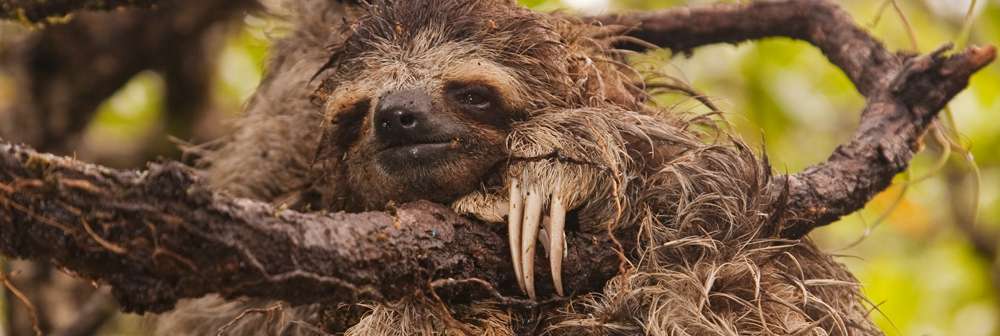The world’s slowest mammal, the sloth, is so sedentary that algae develop on its thick, hairy coat. Its greenish color from plants helps it blend in with the trees in the rainforests of Central and South America. But did you know that their diet includes a fungus with valium-like properties?
Only eating the leaves of Red Mangrove trees, which contain a fungus with a chemical profile similar to Valium, the Pigmy Three-Toed Sloth on the Panamanian island of Escudo appears to be on a permanent high from its primary diet.
The Pigmy Sloth’s Favorite Spot
Every sloth is designed to live in the treetops. Most of their time is spent hanging from branches with a strong grasp made possible by their large claws. Sloths even sleep in trees, and they sleep a lot, roughly 15 to 20 hours every day. Dead sloths have been seen to keep their grasp and remain hung on a limb. Even when awake, they frequently don’t move. They consume fruit, leaves, and shoots from trees at night, and nearly all their water comes from juicy plants.
Sloths hang from trees to reproduce and give birth. Three-toed sloth newborns can frequently be observed clinging to their mothers; for the first nine months of their lives, they travel by clinging to them. (Source: National Geographic)
The Pigmy Sloth on Land
The sloth’s weak hind legs are useless on land, and their large claws are a nuisance. They have to drag their bellies across the ground, digging into the ground with their front claws and pulling themselves along with their powerful front legs. These creatures must attempt to protect themselves by biting and clawing if caught on land since they cannot escape predators like big cats.
Sloths are surprisingly strong swimmers, considering how awkward they are on land. They occasionally fall directly from the rainforest trees into rivers, where they swim effectively with their long arms. (Source: National Geographic)
What are the Characteristics of the Pigmy Sloth?
The three-toed sloth makes a long, high-pitched wail that is frequently referred to as ais (and reverberates through the woodlands.
Few other mammals have the benefit that three-toed sloths do: they can move their heads around 270 degrees thanks to extra neck vertebrae. (Source: National Geographic)
What Do Sloths Do in a Day?
How long do you believe you could hang perpendicular to the ground in a tree? A moment? Ten? Sloths engage in it 24 hours a day.
The six different sloth species have developed long claws that resemble hooks and tendons that pull their digits together when they’re at rest. Also, sloths have a network of blood arteries running through their forearms to cool their muscles and conserve energy.
Even though their muscle mass is 30% less than that of animals of comparable size, sloths are surprisingly strong. Their muscles are made up of slow-twitch fibers, which offer tremendous endurance without consuming much energy.
Since their muscles cannot shiver, sloths warm themselves up by basking in the sun, much like a reptile. Even their digestion is slow; according to Cliffe, processing a single leaf might take up to 30 days. (Source: National Geographic)
Image from Zsl.Org
